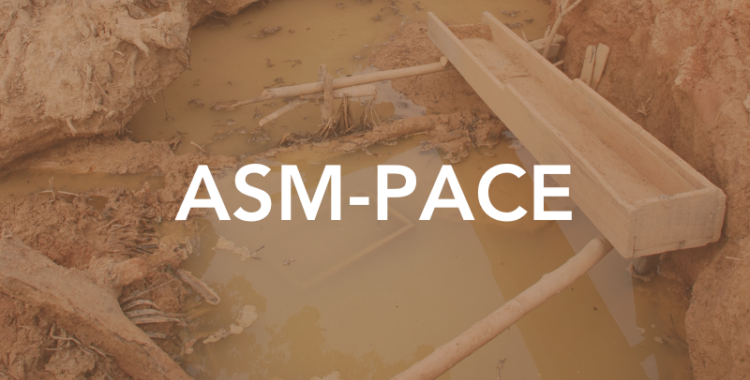In late 2013 I had the chance to undertake artisanal and small-scale mining (ASM) field work in the Chocó rainforest of South America under the auspices of Estelle Levin Ltd. (ELL) and the ASM-PACE programme. The project was conducted on behalf of interested conservation stakeholders and focused on profiling the gold mining dynamics in the region and mining’s impacts on this locally and globally-important ecosystem. ELL provided the client with options as to what conservation organizations and their stakeholders could do to reduce mining’s impacts in the region; we considered technical solutions such as how to make mining more efficient and ‘greener’ (ie, less haphazard, wasteful, and with more environmental care), and the social supports necessary given the complex situation in the area. The Chocó rainforest, which includes parts of Colombia and northern Ecuador, is one of the most bio-diverse places in the world but also an area where rule of law is a difficult issue owing to the legacy of insurgency activities, significant illicit cross-border trade, and other issues.
Due to the sensitive security situation in the region and the limited time frame of our research, only few interviews and site visits were possible. This means our understanding of the situation was inevitably partial. However, the information gathered was still plentiful and suggests that the following statements stand in close proximity to reality.
Both Ecuador and Colombia have flourishing ASM sectors. In Ecuador, the largest small-scale mining areas are in the south of the country, which is where the government and its partners have focused their energies on capacity-building and formalization. However, on the northern border with Colombia, gold mining – primarily artisanal—has taken place for hundreds of years and has always been a source of income to local communities. This can be seen in village names like 'Playa de Oro' and in historical documents. Recently (as discussed below), over the last 7-10 years, small-scale gold mining operations – quite different to the traditional, artisanal operations - have become active in the north; most of it appears to be conducted without licenses.
The classic artisanal mining – in this case, panning for gold in the river by community members in this region—was of minimal threat to the environment and to people's health. However, this has changed dramatically in recent years (around 2006) when heavy machinery for mining arrived on the northern border of Ecuador. Now faster and more destructive mining advances cut down valuable rainforest and pollute rivers with toxic substances like mercury and gasoline. With weak presence of the government and hardly any effective police enforcement in the region, we were advised that private investors from Ecuador and unsavoury elements from Colombia had discovered the region to be an ideal place for making and laundering money. Paying for a retro excavator (approximately US$100,000) is something the average local person in that region cannot afford.
But the reasons for the increase in gold mining on the Ecuador side of the border are manifold. Firstly, the relatively high gold price (approximately US$41 per gram at the time of research) makes more and more low grade deposits economically attractive to exploit. Secondly, the infestation of African Palm plantations with an unknown fungus infection threatens people's income. Whole plantations have this sickness which causes the palm to first stop forming seeds and later to die. The palm oil industry is one of the most important employers in the region. Thirdly, a decline in the timber industry was witnessed. Reasons for the decline are stronger government enforcement and the fact that most valuable and profitable species have already been cut down.
Men, women, and children were observed mining for gold in this region. Major health and safety issues include deaths on site caused by collapses of unearthed piles of overburden alongside the pits. In addition, mercury use is pervasive. Researchers worried about the health impacts, given that it appears common to burn off the mercury amalgam in enclosed spaces (e.g., old school houses, household kitchens, etc.). Unlike in the south of Ecuador, there are no formal mercury-free processing facilities in the north of the country. Downstream, communities complain about undrinkable, contaminated, and muddied waters that contain mercury and gasoline and that produce lesions on children’s skin.
When asked about solutions – everyone we spoke to, from government officials to local communities and miners – said that mining should continue, but desperately needs to be done more responsibly.
There are many ways forward in the Ecuadorian Chocó, but opportunities for action are limited because non-governmental ASGM is still considered illegal except in a few cases. The challenge of effecting change is also given by the criminal elements involved and the level of danger arising from them. Legalization and targeted capacity building (by government and its private and nonprofit partners) are needed in a place like this, where small-scale gold mining is informal, inefficient, environmentally destructive, but an activity there to stay. Instead of ignoring it or hoping it will disappear on its own, the way forward is to legalize and strategically engage. The country’s forests – a part of its national treasure—depend on it.
Through its Guest Blog Series, the ASM-PACE Programme invites ASM experts to share their knowledge, experiences and opinions on issues pertaining to ASM, and particularly on ASM in protected areas and critical ecosystems, with the aim to foster continued dialogue, country-specific learning and share best practices on ASM interventions.
The blogs posted on this site do not represent the views of the ASM-PACE Programme, its donors or partners, or the author’s organization, unless otherwise specified.



